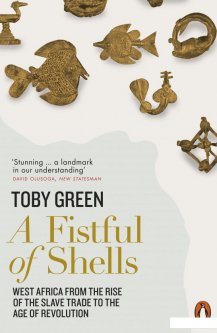A Fistful of Shells. West Africa from the Rise of the Slave Trade to the Age of Revolution (1110652)
755.00 ₴
Лучшие условия покупки!
- Удовольствие гарантировано
- Беспроблемный возврат
- Безопасные платежи
Shortlisted for the Wolfson History Prize, Cundill History Prize, Fage and Oliver Prize, the Los Angeles Times Book Prize and the Pius Adesanmi Memorial Award Winner of the Nayef Al-Rodhan Prize for Global Cultural Understanding 2019’Astonishing, staggering’ Ben Okri, Daily TelegraphA groundbreaking history that will transform our view of West Africa By the time of the ‘Scramble for Africa’ in the late nineteenth century, Africa had already been globally connected for many centuries. Its gold had fuelled the economies of Europe and Islamic world since around 1000, and its sophisticated kingdoms had traded with Europeans along the coasts from Senegal down to Angola since the fifteenth century. Until at least 1650, this was a trade of equals, using a variety of currencies — most importantly shells: the cowrie shells imported from the Maldives, and the nzimbu shells imported from Brazil. Toby Green’s groundbreaking new book transforms our view of West and West-Central Africa. It reconstructs the world of kingdoms whose existence (like those of Europe) revolved around warfare, taxation, trade, diplomacy, complex religious beliefs, royal display and extravagance, and the production of art. Over time, the relationship between Africa and Europe revolved ever more around the trade in slaves, damaging Africa’s relative political and economic power as the terms of monetary exchange shifted drastically in Europe’s favour. In spite of these growing capital imbalances, longstanding contacts ensured remarkable connections between the Age of Revolution in Europe and America and the birth of a revolutionary nineteenth century in Africa. A Fistful of Shells draws not just on written histories, but on archival research in nine countries, on art, praise-singers, oral history, archaeology, letters, and the author’s personal experience to create a new perspective on the history of one of the world’s most important regions.
| Brand |
|---|



